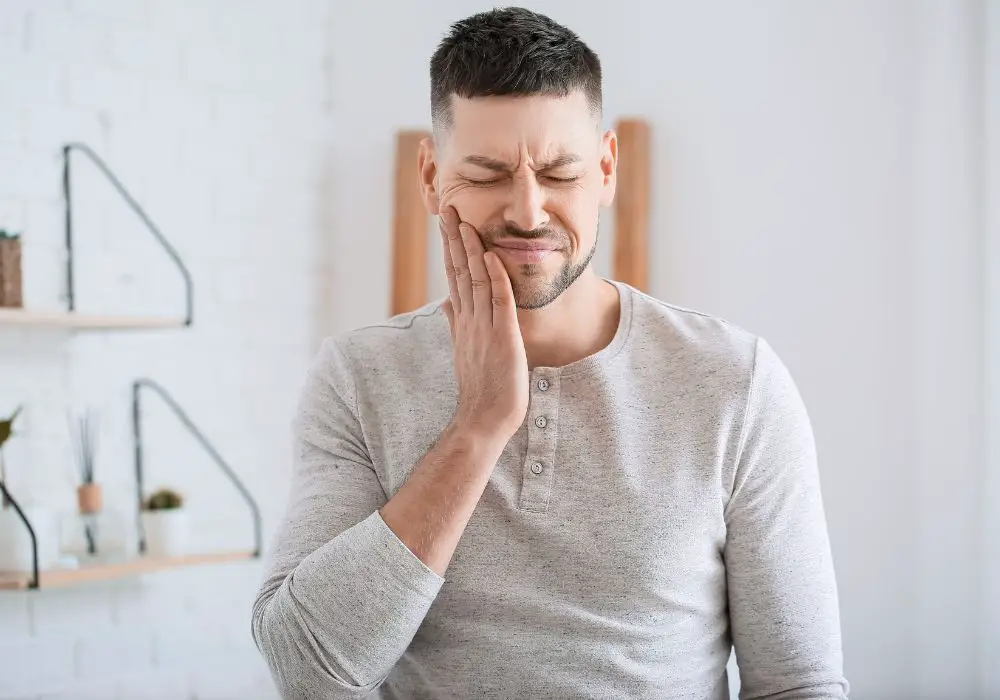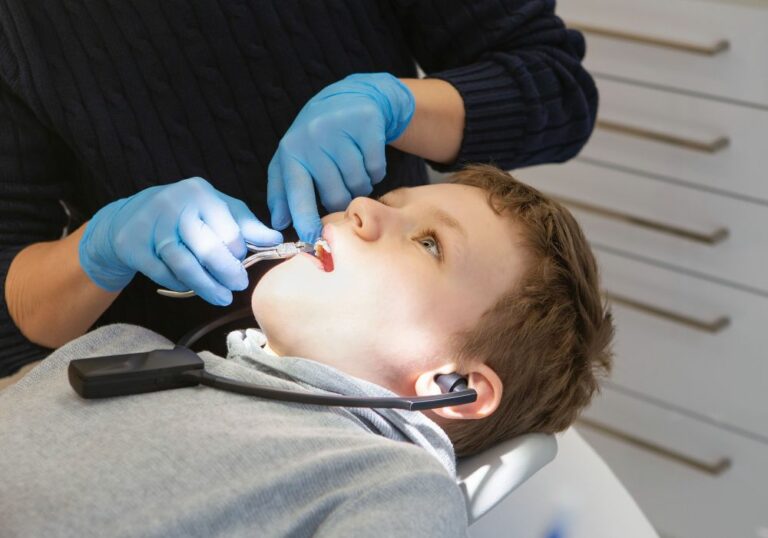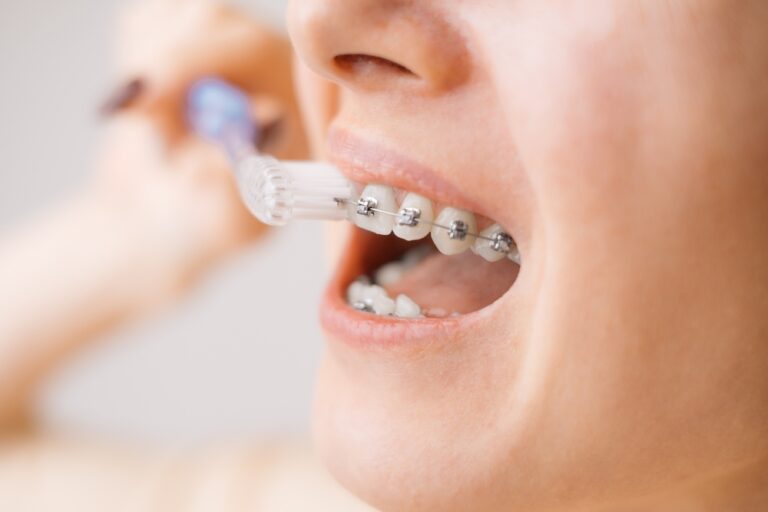The emergence of wisdom teeth, or third molars, can be an extremely painful experience for many people. Wisdom teeth begin to erupt during the late teens to early twenties, which is later than the other adult teeth. Their late arrival means wisdom teeth may have insufficient room to properly emerge in the mouth due to other teeth already occupying the space. As a result, wisdom teeth often become impacted or only partially emerge, leading to a variety of potentially painful problems.
Common reasons wisdom teeth hurt during growth

Pericoronitis
Pericoronitis refers to inflammation of the gum tissue surrounding the crown of a tooth. It commonly affects wisdom teeth because they often only partially break through the gums. Food and bacteria can easily become trapped in the gum flap overlying an erupting wisdom tooth, causing infection and swelling.
The main symptoms of pericoronitis include:
- Throbbing pain or dull ache around the wisdom tooth that can range from mild to severe. The pain may be constant or come and go.
- Swelling and redness of the gums surrounding the tooth. The gums may appear puffy and irritated.
- Bad breath or foul metallic taste in the mouth. This is caused by the infected debris accumulating under the gums.
- Headache, particularly pain radiating to the temple area on the affected side.
- Difficulty opening the mouth, especially in the morning. The swelling causes stiffness in the jaw muscles.
- Pain that radiates to the ear, jaw joint, and neck lymph nodes on the same side as the infected wisdom tooth.
Pericoronitis pain can fluctuate in severity but tend to worsen over time without treatment. The infection requires proper dental care to thoroughly clean under the gum flap and remove all trapped debris. Medications like antibiotics and chlorhexidine antiseptic rinses are needed to control the inflammation and bacterial levels. Unresolved pericoronitis can eventually spread deeper into the jaw and facial tissues.
Impacted wisdom teeth
Impacted wisdom teeth become trapped below the surface of the gums and are unable to fully erupt into a functional position. Most often, adjacent molars block the path of emergence. Attempts by the wisdom tooth to advance can cause compression and damage to surrounding tissues like bone, nerves, and other teeth roots. Common symptoms associated with impacted wisdom teeth include:
- Persistent dull, throbbing pain which may wax and wane or be constant. The pain is often described as feeling like a toothache.
- Pain that radiates along the jawline or upwards into the temple and ear on the affected side. This refers pain results from inflammation around the tooth pressing on nearby nerves.
- Difficulty opening the mouth, especially moving the jaw sideways to fully open. Chewing may also be uncomfortable.
- Chronic stiffness, soreness, or tenderness of the jaw muscles. This results from strain placed on the muscles when opening and closing.
- Swelling of the gums overlying the impacted tooth which may repeatedly flare up and recede.
- Formation of a cyst or benign tumor around the crown of the impacted tooth below the gums. This appears as a bluish lump if visible.
- Damage to the adjacent second molars due to excessive crowding pressure. This can lead to cavities or loosening of the molars.
If left untreated, impacted wisdom teeth may cause recurrent infections and worsening damage. Extraction is usually necessary when a wisdom tooth fails to properly emerge.
Crowding
The average adult mouth has only a limited amount of space available for the 16 upper and lower teeth. The addition of large wisdom teeth can lead to crowding and misalignment problems. Existing teeth may shift position or rotate to try to accommodate the newly erupting wisdom teeth.
Common issues associated with dental crowding include:
- Tooth decay and cavities due to overlapped enamel. Crowding prevents proper brushing to keep enamel surfaces clean.
- Gum disease and gingivitis from crowding. Closely positioned teeth trap more plaque.
- Biting of the cheeks and gums due to protruding teeth being pushed outward.
- Chipped or cracked teeth due to contact from malpositioned teeth.
- Headache and temporomandibular joint pain from the teeth not fitting together correctly. Jaw movement is impaired.
- An abnormal bite where the upper and lower teeth do not meet properly.
In some cases, orthodontic treatment like braces may be required to align the teeth and relieve discomfort associated with crowding. However, wisdom tooth extraction is also very commonly performed to create more space.
Key factors that influence wisdom tooth pain

Several factors can help determine the intensity of wisdom tooth pain and whether that discomfort will be temporary or require professional intervention.
Degree of impaction
Partially impacted wisdom teeth generally cause more problems than those able to fully erupt into the mouth. When wisdom teeth are blocked completely below the gum line and bone, the problems tend to be more severe compared to teeth partially visible in the mouth. Teeth buried deeply under the gums allow greater opportunity for cysts and tumors to form around the tooth. Infections also develop more readily around fully impacted teeth. The degree of impaction strongly influences the extent of pain, swelling, and other symptoms.
Age and jaw development
Younger individuals with wisdom teeth still actively forming and attempting to move into position often experience more pain symptoms. Teeth in late teens and early 20s are still developing their full roots and often only partially erupted. The eruption process involves shifting of the teeth and bone remodeling as the jaw continues to grow. All of this movement and pressure against adjacent teeth causes irritation, inflammation, and discomfort.
Older adults with less jaw growth potential tend to have wisdom teeth that remain static rather than continue to erupt when obstructed. Less shifting movement of the wisdom teeth results in less friction and aggravation to surrounding tissues. However, long-standing impactions in mature jaws increase the chance of serious problems like recurrent infection, decay, gum disease, and damage to adjacent teeth roots.
Nature of impaction
Teeth impacted at an angle or twisted orientation typically produce more intense symptoms compared to wisdom teeth simply blocked vertically by another tooth. Crooked or sideways impactions cause greater pressure on surrounding tissues as the wisdom tooth attempts to find an eruption pathway. Similarly, wisdom teeth trying to erupt through solid jawbone cause more pain compared to teeth merely covered by gum tissue. Attempting to burrow through dense bone offers much more resistance than simply pushing through soft gums.
Periodontal health
Pre-existing gum disease or a susceptibility to periodontal problems can significantly worsen wisdom tooth pain. Bacteria from infections around existing teeth can spread to newly erupting wisdom teeth that have limited protection from the gums. The tight space around erupting wisdom teeth also makes them harder to keep clean and more prone to debris accumulation. Poor oral hygiene and plaque buildup allows pathogenic bacteria to readily grow and colonize the area, kicking off gum infections like pericoronitis.
Oral habits
Habits involving repetitive irritation to the back teeth may heighten discomfort from erupting wisdom teeth. Chewing gum excessively on the affected side, chewing on hard items like ice, or chewing on the sides of the mouth can aggravate the tender tissues around erupting wisdom teeth. Clenching and grinding of the back teeth can likewise increase pain symptoms from wisdom teeth struggling to emerge. Breaking these habits helps minimize unnecessary trauma to the area.
Treatments for painful wisdom teeth

Several approaches exist for managing and eliminating wisdom tooth pain:
Medications
Over-the-counter oral pain relievers like ibuprofen (Advil, Motrin) or acetaminophen (Tylenol) can provide satisfactory temporary relief for mild to moderate wisdom tooth pain. Ibuprofen is especially helpful due its anti-inflammatory properties in addition to pain relief. For more severe pain that over-the-counter medications cannot control, stronger prescription pain medication may be prescribed by a dentist or oral surgeon. Antibiotics are also frequently needed to clear up advanced infections of the gums or jaw tissues that can occur around erupting wisdom teeth.
Palliative dental care
A dentist may perform select palliative (comfort) procedures to temporarily reduce wisdom tooth pain until more definitive treatment is possible. These in-office treatments include:
- Administering local anesthetic injections to numb the area for pain relief.
- Irrigating under the gums to flush out trapped debris and disinfect the area.
- Removing inflamed operculum gum tissue partially covering the erupting wisdom tooth.
- Smoothing any sharp or jagged edges of a partially erupted wisdom tooth.
- Packing medicated dressing between the tooth and gum flap to promote healing.
- Applying antibiotic chips or pastes directly around the tooth to fight bacteria.
Such palliative temporary measures can bring some short-term relief but do not address the underlying problem. Wisdom tooth extraction or other oral surgery is often still eventually required.
Wisdom tooth extraction
Extracting problematic wisdom teeth may become necessary if impaction prevents normal eruption and continues to cause pain or infection. Following extraction, symptoms typically resolve quickly, and patients heal within several weeks. However, surgical extraction of impacted teeth can lead to temporary side effects like:
- Facial swelling around the jaw for the first 3 days
- Bruising on the cheeks or neck that fades after a week
- Limited jaw opening due to swelling and muscle stiffness for the first week
- Numbness or tingling of the lip, tongue, chin, or mouth if nerves were irritated. This may slowly improve over weeks.
- Bad breath for the first few days as the socket heals
Appropriate at-home care and over-the-counter medication are usually sufficient to manage extraction recovery. However, recovery time frames can vary substantially depending on the severity of impaction. Less complicated procedures may heal in just 1-2 weeks. Deeply impacted teeth requiring extensive bone removal and tooth sectioning can extend recovery to 2-3 months for full healing.
Orthognathic surgery
In some situations, patients have severe jaw misalignment and vertical or horizontal overcrowding of the teeth. This provides inadequate room for impacted wisdom teeth to properly emerge. Orthognathic surgery can reposition and realign the entire jaw to create sufficient space for eruption.
During this oral surgery:
- The jawbone is cut and repositioned into proper alignment.
- Retainers and screws hold it in the new position during healing.
- Pre- and post-surgical orthodontics complements the procedure.
This approach allows impacted wisdom teeth causing pain and crowding to successfully erupt and become functional. Healing time for orthognathic surgery takes several weeks to months before teeth can be fully realigned.
Wisdom tooth extraction complications
While removing problematic wisdom teeth often reduces pain long-term, the surgery does carry risks of certain complications:
Dry socket – The blood clot that initially fills the extraction site gets dislodged too soon after surgery. This exposes the underlying bone and nerve endings. Dry socket causes severe throbbing pain a few days after the extraction. Rinsing with salt water helps keep the site clean while medicated dressings are placed to soothe the exposed tissue.
Nerve injury – During impacted wisdom tooth removal, nearby sensory nerves like the lingual or inferior alveolar can suffer accidental damage. This may result in prolonged numbness and altered sensations like tingling or burning in the tongue, lip, chin, or teeth. Symptoms may slowly improve over weeks or months as the nerve regenerates.
Infection – Bacteria can contaminate the surgical site following extraction and cause an infection. Signs include foul odor, pus discharge, increased swelling after 2 days, and pain not controlled by medication. Antibiotics, oral rinses, and salt water help manage infected sockets.
Bleeding – Oozing blood is common after extraction, but uncontrolled bleeding is an emergency. Sustained pressure to the gauze over the site for 30-60 minutes usually stops minor bleeding. Uncontrolled bleeding may require professional dental treatment or emergency care.
Sinus involvement – The maxillary sinuses border the upper molars and premolars. During upper wisdom tooth removal, the sinus lining can get displaced or perforated. Additional procedures may be needed to close the opening and prevent sinus infection.
Preventing future wisdom tooth problems

While third molars often cause problems, not everyone requires extraction. Good oral hygiene and routine dental care from a young age helps minimize issues with emerging wisdom teeth:
- Maintain regularly scheduled dental cleanings and exams every 6 months
- Promptly treat gum disease, cavities, and orthodontic problems in existing teeth
- Use proper brushing and flossing technique to keep wisdom teeth plaque-free
- Get periodic dental x-rays to monitor for impaction starting in the mid-teens
- Consider wisdom tooth removal before full root formation if inadequate space exists
Following your dentist’s customized recommendations and having wisdom teeth extracted preemptively when indicated prevents future pain flare-ups and avoids complex extraction surgeries later.
Frequently Asked Questions
How long does wisdom tooth pain last?
The duration of wisdom tooth pain varies substantially depending on the cause. Mild tenderness from initial eruption may resolve within several days to weeks as the tooth finishes emerging. Severe infections like pericoronitis cause throbbing pain persisting for many days or longer until dental treatment. Fully impacted wisdom teeth may lead to chronic, intermittent pain until extracted.
At what age is wisdom tooth pain most common?
Wisdom teeth typically begin emerging around ages 17-21 as the roots finish forming. This coincides with the period when pain symptoms most frequently arise. However, wisdom teeth continue to slowly shift and change position throughout the 20s and even into the 30s in some cases. Ongoing development can still produce occasional pain or discomfort even beyond the typical teenage years.
Can wisdom teeth be left in if they don’t hurt?
Asymptomatic, fully erupted wisdom teeth do not necessarily require extraction. Many dentists still recommend early removal to prevent possible future problems. However, wisdom teeth without any signs of impaction, cavities, or gum disease may potentially be monitored and left in place. Regular dental x-rays are important to check for any concerning changes.
What home remedies relieve wisdom tooth pain?
Salt water rinses, cold compresses against the cheek, dabbing sore gums with clove oil, chewing on clean ginger root, staying hydrated, and maintaining oral hygiene may temporarily lessen wisdom tooth discomfort. Ibuprofen or acetaminophen also help with inflammation. However, persistent moderate to severe pain likely requires professional dental treatment.
When does wisdom tooth pain require an emergency dental visit?
Seek prompt emergency dental attention for uncontrolled bleeding from the gums, pus discharge or foul odor, or difficulty swallowing. Facial swelling, high fever, chills, or severe unrelenting pain despite over-the-counter medication are also signs of potential emergency. Abscesses around wisdom teeth can spread rapidly without antibiotics. If in doubt, get evaluated.
Conclusion
The emergence of wisdom teeth during the late teens and early 20s is a challenging transitional period for many young adults. The jaws have limited space, leading to impaction and only partial eruption in most cases. Attempts by the developing wisdom teeth to enter the mouth often cause painful compression of surrounding tissues and become prone to infections. Common problems like pericoronitis and crowding may ultimately require extraction to relieve symptoms long-term. Seeking regular professional dental care from an early age can help detect eruption problems before they escalate. Careful hygiene and following post-surgical instructions helps minimize discomfort after wisdom tooth procedures. Recognizing typical wisdom tooth pain patterns and the available treatments allows patients to work together with dental providers in managing this final phase of tooth development.






